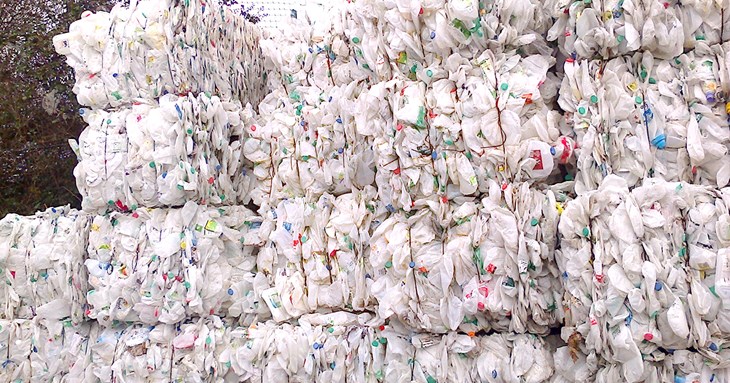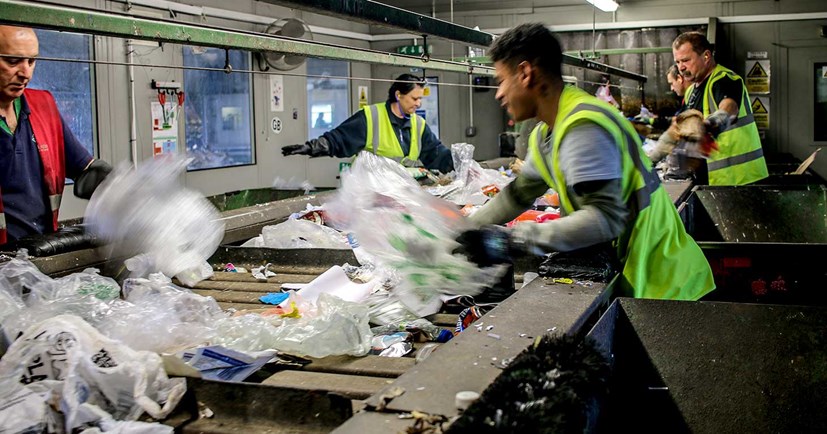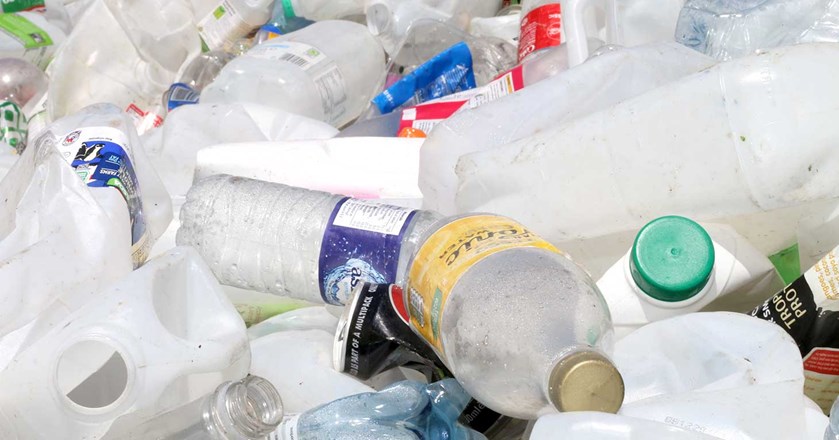Exeter Recycling: What do Exeter’s plastic milk bottles get recycled into?
Published: 25 February 2020

In his regular feature, Denis the Dustcart asks the question "What do Exeter’s plastic milk bottles get recycled into?"
You can follow Denis on his Facebook page to keep up with information about Recycling issues.
__________________________________________________________________________
Plastic milk bottles
We send our milk bottles off to be turned into new milk bottles as part of the Dairy Roadmap – a programme run by the dairy industry to ‘improve the environmental impacts associated with the production of milk and dairy products’ by ‘reducing the emission of greenhouse gases, waste, and other pollutants [and] also improving the efficiency at which [the industry] consumes water [and] energy.’
Between March and October 2019, we sent 133 tonnes of milk bottles to be recycled back into new bottles. If they were all two-pint bottles, that would be 4,433,333 bottles.
8,866,666 pints is a lot of milk – milk that will have emitted nearly 7,000 tonnes of CO2 into the atmosphere. It’s also a lot of highly valuable HDPE plastic.
And yet only 75% of the UK’s plastic milk bottles are recycled.
It’s clear that we need to reduce our consumption of products where we can – not only to avoid producing packaging waste, but also to lessen the impact of the product contained in that packaging – but we also need to make sure we recycle what we can’t reuse. (And we need to make sure, when we reuse something, that we don’t make it into something that can’t later be recycled.)
The majority of Exeter’s milk bottles are from Exeter’s residents, however we also sort some plastic from West Devon, North Devon and Teignbridge in our plant. (They collect it and bring it to us.)

Commonly, milk bottles are turned into such things as plastic lumber for picnic tables, park benches, etc., but in Exeter we do our best to ensure they get turned back into milk bottles.
We work hard at closing the loop on as much of our material as possible, lessening its impact on the world. That’s why we became part of the Dairy Roadmap – the first local authority MRF in the UK to be so.
Many people ask me whether they should keep their tops on – and I insist that they do! This goes for all plastic bottles, actually.
Milk bottle lids are made from HDPE – the same material that the bottle is made from. The only issue is the heavy pigmentation in them, which creates more effort in reprocessing – but this is something the packaging industry is working on. Perhaps more significantly-coloured sleeves instead of coloured lids?
Then again, a lot of people also ask me about the plastic sleeves on milk bottles, since single-use film seems like a less-than-ideal solution for labelling bottles. Why not paper?
Well, this particular plastic is significantly less harmful than paper alternatives.
The sleeves are designed to be easily removed during the recycling process – unlike ‘planet-kind’ paper labels. When the labels were paper, they were printed with a lot more ink (which also meant a lot more bleaching afterwards), had to be glued on (glue is another resource-heavy product) and were hard to remove, causing increased energy and water usage in the recycling process. What did come off couldn’t be recycled but had the potential to contaminate the plastic polymer.
These plastic labels are shrink-wrapped onto the bottle and have a very small carbon-footprint in production compared with paper.
Standardisation in production is, as always, the key to ensuring maximum recycling potential. Remember those milk pouches you could buy a few years ago, that you emptied into a jug? They were intended to cut down on packaging, but they couldn’t be recycled properly. Maybe they used less plastic, but it was virgin plastic and when you combined that with the fact that none of it was being recycled, it was actually a lot more plastic going in the rubbish bin than comes from plastic bottles.
Cutting down our consumption of goods is clearly vital for our planet’s future, but we must assess the impact of what we do bring into our homes and make sure we take appropriate steps to ensure it has as small a footprint as possible.
We in Exeter, as a local authority, work hard to ensure what comes through our doors for recycling is actually recycled, so long as it can be – and into proper, useful products again. We must continue to push for behavioural change around consumerism and waste, but we must work hard with what we’ve got as well.
Recycling may come after ‘reduce’ and ‘reuse’ on the waste hierarchy, but it’s a massive industry and, until such a time as it isn’t needed, each and every one of us in the chain has a responsibility to do our absolute best.
For more about the Dairy Roadmap and the other things being done to reduce the environmental impact of the dairy industry, visit the Dairy UK website: www.dairyuk.org

